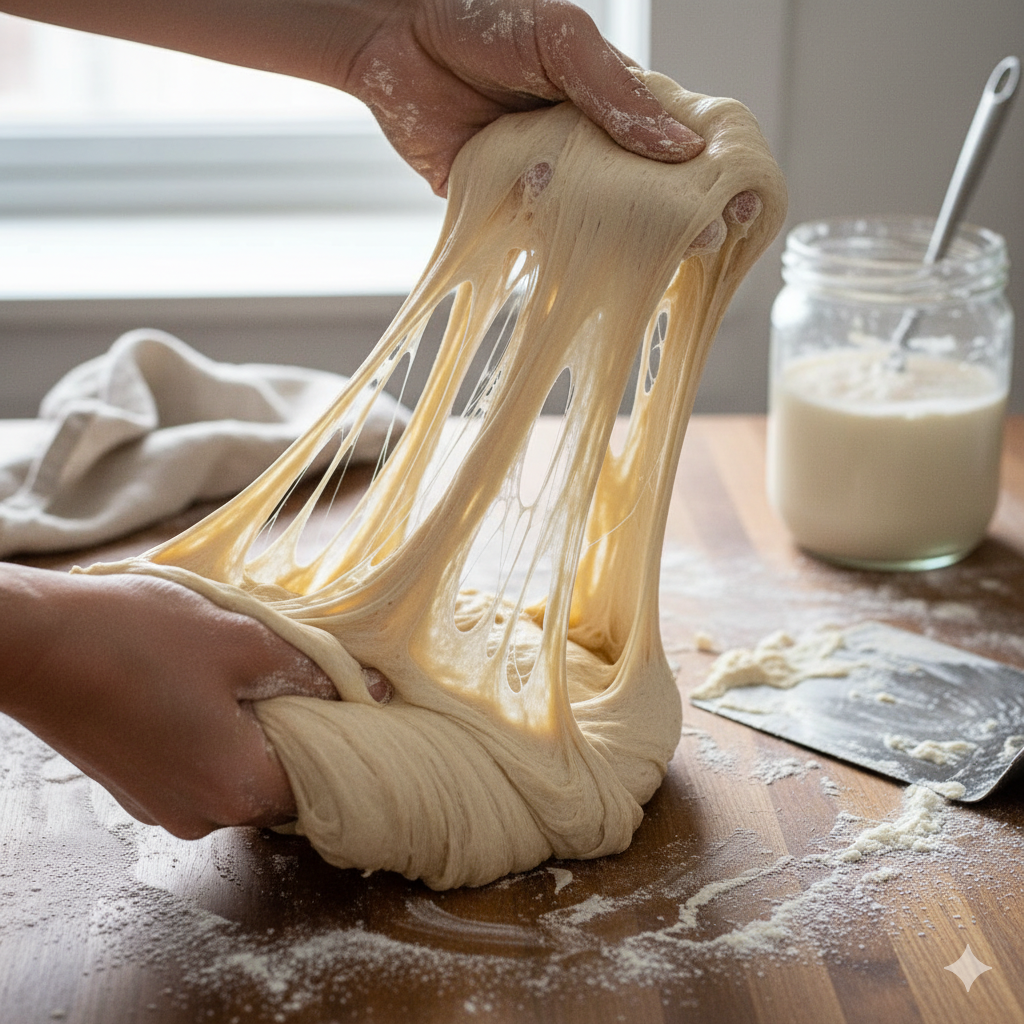Is your sourdough too sticky when you’re kneading it? If you’ve ever tried making sourdough and ended up with dough glued to your hands, countertop, or mixing bowl, you’re not alone. One of the most common beginner frustrations is dough that feels too sticky to handle. The good news? Stickiness is a normal part of working with sourdough — and with a few simple adjustments, you can turn that messy dough into a loaf with beautiful rise and flavor.

Why Is My Sourdough So Sticky?
Sourdough is naturally wetter than many yeasted breads. That’s part of what gives it its open crumb and chewy texture. But if your dough feels unmanageable, a few factors could be at play:
- High hydration — Too much water relative to flour makes dough slack and sticky.
- Weak gluten development — If the dough hasn’t been kneaded, stretched, or folded enough, it won’t hold together.
- Warm environment — Heat speeds up fermentation, which can make dough looser and harder to handle.
- Flour type — Whole wheat and rye absorb water differently than white flour, often resulting in tackier dough.
How to Fix Sticky Sourdough
Luckily, sticky dough doesn’t mean failed bread. Here are some strategies to help:
1. Use Wet Hands
Instead of fighting stickiness with dry flour, dip your hands in water before handling the dough. Wet hands glide off sticky surfaces much more easily.
2. Try the “Slap and Fold” or Stretch and Fold
Sticky dough doesn’t respond well to traditional kneading. Techniques like slap-and-fold or stretch-and-fold build gluten without needing the dough to be dry. With every fold, the dough becomes stronger and less tacky.
3. Don’t Add Too Much Extra Flour
It’s tempting to throw flour at sticky dough, but that can lead to a dense loaf. Instead, lightly flour the counter or use a bench scraper to manage stickiness. Focus on developing gluten strength rather than drying the dough out.
4. Autolyse for Better Structure
Letting flour and water sit together before adding your starter and salt gives gluten a head start. This makes dough easier to handle later on.
5. Adjust Hydration (If Needed)
If you’re a beginner, start with a recipe that uses 65–70% hydration. Higher hydration (75–80%+) makes incredible bread but can be tough to work with until you’re comfortable. Here is a recipe for an easier sourdough that has a lower hydration: Simple Sourdough Recipe.
6. Chill the Dough
Cold dough is less sticky. If shaping feels impossible, pop the dough into the fridge for 20–30 minutes, then try again.
When Sticky Is Actually a Good Sign
Here’s the thing: some stickiness is normal and even desirable. Sourdough isn’t supposed to feel like stiff pizza dough. A tacky texture means your dough is well-hydrated, which leads to:
- Open, airy crumb
- Chewy texture
- Great oven spring
So don’t be afraid of a little stickiness — it often signals that you’re on the right track.
Final Thoughts
If your sourdough is too sticky, don’t panic. Adjust your hydration, strengthen your gluten, and use wet hands or a scraper to help manage the dough. Over time, you’ll develop the feel for what’s “normal sticky” versus “too sticky.”
Stick with it, practice, and you’ll discover that managing sticky sourdough is less about avoiding the mess — and more about embracing it as part of the craft.